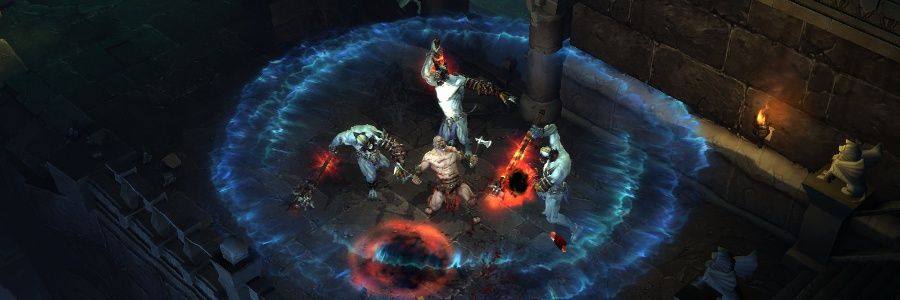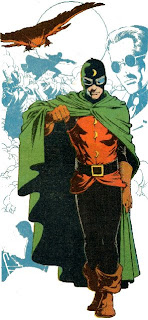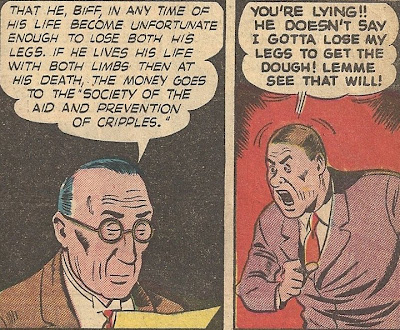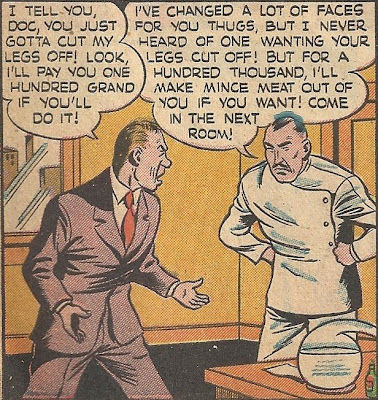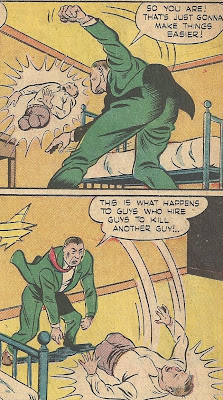
Back in the 60's, Marvel Comics encouraged fan participation on a level previously unseen in comics, with lettercolumns, fanzines, No-Prizes and more, all set up to foster a sense of community. But perhaps no Marvel creation had a bigger impact on the emerging fan subculture than the MMMS.
Yes, the Merry Marvel Marching Society, Marvel's first official fan club, was a watershed moment still celebrated by fans today. Comics form the time period are filled with advertisements, blurbs and injunctions to reader, urging them to join the MMMS in order to get their very own Marvel membership card, stationary, buttons and stickers. And the piece de resistance of it all: the MMMS ranking system.
"Know Ye These, the Hallowed Ranks of Marveldom," shouted a banner which appeared in the lettercolumns of every Marvel comic for a number of months. Created by then-fan and now-pro Mark Evanier, the ranks were a way to codify and quantify a fan's devotion to the company, as MMMS members (and regular old readers) were awarded honorary titles for achieving certain milestones. Here are the Hallowed Ranks of Marveldom:

Now, any long time Marvel fan will probably happily admit that at one time or another they've tallied up their accomplishments to see which titles they are entitled to; indeed, for many years, it was standard procedure for fans to sign their letters with their titles, as they are considered the comic book equivalent of a doctorate or hereditary rank. So just as someone out in the larger world might sign themselves "Dr. Robert Bruce Banner, Esq.", a comic fan might sign their letters "T. M. Maple, R.F.O., K.O.F."
And over the years, I myself have been proud to claim the title of Permanent Marvelite Maximus thanks to my efforts on behalf of Marvel Comics. Though I admit to occasional lapses in my buying habits, I have been a Real Frantic One, buying at least three Marvel titles per month, for the last 25 years. During my grade school days, I also introduced a number of other readers to Marvel Comics and comics in general, qualifying me for the title of Keeper of the Flame.

While most Marvel fans have those titles, I have also accomplished the two more difficult requirements for P.M.M. thanks to a particularly inspired burst of activity in 1992. At that time I had a letter published in
Avengers #353, where I rightly took Bob Harras to task for his characterizations of Hera and Deathbird in the previous months; despite my pleasure at attaining the rank of Quite Nuff Sayer, the response I received to my extremely valid concerns still rings hollow to this day. And at the same time I and my friend Jason finished our magnum opus, a detailed page-by-page review of the first 350 issues of
Avengers listing every character who had ever appeared, broken down by team members, guest stars, villains, cameos, flashbacks and images (such as the ubiquitous photos of past members that grace the walls of Avengers Mansion). We then duplicated this effort for
West Coast Avengers and
Solo Avengers, adding a listing of every credited creator for the three titles.
For this, I received a No-Prize and the title of Titanic True Believer, which in turn allowed me to forever ink P.M.M on all of my correspondences as a Permanent Marvelite Maximus.
Yet, you'll note that one title has not been mentioned yet. The title that has forever eluded me and the vast majority of Marvel fans, the one title that cannot be earned but must instead be bestowed by the powers that be: the title of Fearless Front Facer. Few men or women who have ever walked this Earth have had the privilege of claiming this prestigious honor, with former Marvel Editor-in-Chief Roy Thomas being one of the rare publicly feted honorees.
As you can imagine, obtaining the rank of F.F.F. would be one of the crowning moments in the life of any comic fan and I, like so many others, have for years searched in vain for a way to receive this singular honor.

But so far, in vain. Will I, like so many others, go to my grave wondering if I gave the last full measure of devotion to Stan, Jack and the Bullpen? Have I truly done all I can in the name of the MMMS?
I say thee nay.
Starting today, right now, I am proud to excited to announce the beginning of my Quest for the F. F. F. Though I realize the odds are against me, it is my goal now and forever more to earn from the powers that be at Marvel Comics the title of Fearless Front Facer. In this effort I am determined to meet all challenges, exceed all expectations and, if necessary, retcon my own future. Whatever tasks Marvel chooses to place before me, I will conquer.
With that in mind, and with this fan immortality ever present in my vision, I have sent the following email to Marvel editor Tom Brevoort detailing my quest and asking that he and the other poobahs at Marvel consider my plight and set me on the path towards glory:
"Hello Mr. Brevoort,
I am a long time fan of Marvel Comics, and through the years I have had the pleasure of achieving a number of notable milestones on behalf of your company. For over two decades I have been buying at least three Marvel titles each month, qualifying me for the classic MMMS title of Real Frantic One. I also introduced a number of friends to Marvel comics, making me a Keeper of the Flame, and in addition I became a Quite Nuff Sayer thanks to a letter I had published in Avengers #353. Finally, in 1992, I received a No-Prize for my page-by-page catalog of every character to ever appear in an Avengers title.
Thanks to these humble accomplishments, according to the timeless rules of the Hallowed Ranks of Marveldom, I have proudly been entitled to call myself a Permanent Marvelite Maximus and affix P.M.M. to my signature in correspondence.
But despite my efforts, one accolade has remained forever out of my reach: the title of Fearless Front Facer. As you know, this is a title that cannot be earned, but can only be conferred upon a recipient by the powers that be at Marvel. Few indeed are those who have been graced with this ultimate honor and those who have, like Rascally Roy Thomas, have gone down in history as legends of Marvel.
Today, then, I am announcing the beginning of my quest to achieve the title of Fearless Front Facer and I respectfully submit myself and my accomplishments to your judgment. I realize, however, that my fan credentials, however impressive, are not in themselves unique enough to render me worthy of this honor and so I request that you and your peers at the House of Ideas, should you see fit, place before me any tasks you may require in order that I may earn this title. Like Hercules before me, I am prepared to take on these trials in the name of Marvel and I vow not to abandon my quest until I can finally proclaim myself a F. F. F.
I will be chronicling my efforts on my comics blog, The Vault (http://comicsvault.blogspot.com/) so that all might see how seriously fans take the injunction to go "above and beyond the call of duty" in devotion to Marvel.
Thank you for your time and I await word on what tasks my quest for the F. F. F. entail.
Yours,
Scott Harris
P.M.M."
And so, the Quest for the F. F. F. begins. Stay tuned for future updates and, as always: face front, true believers!
UPDATE: The quest is over! After receiving a response from Marvel,
the quest continued before coming to a shocking conclusion thanks to an email from
Stan Lee himself! Read all about it!
 The comics world was saddened again this week by the death of one of the industry's most acclaimed creators, former DC and Charlton Executive Editor Dick Giordano, who passed away on Saturday due to complications from pneumonia. He was 77.
The comics world was saddened again this week by the death of one of the industry's most acclaimed creators, former DC and Charlton Executive Editor Dick Giordano, who passed away on Saturday due to complications from pneumonia. He was 77.  For most of today's fans, Giordano is probably best known for his work as an inker. Though he also pencilled many comics over his long career, he rose to fame within the art ranks for his strong work inking Neal Adams on the groundbreaking Green Lantern / Green Arrow "relevancy" run in the early 1970's. During this time he also worked closely with Adams and writer Denny O'Neil on their well received Batman revamp which dumped the camp aspects left over from the 60's returned the character to its darker roots. And nearly a decade later, he inked one of his highest profile projects, working with George Perez to create the artwork for Crisis on Infinite Earths.
For most of today's fans, Giordano is probably best known for his work as an inker. Though he also pencilled many comics over his long career, he rose to fame within the art ranks for his strong work inking Neal Adams on the groundbreaking Green Lantern / Green Arrow "relevancy" run in the early 1970's. During this time he also worked closely with Adams and writer Denny O'Neil on their well received Batman revamp which dumped the camp aspects left over from the 60's returned the character to its darker roots. And nearly a decade later, he inked one of his highest profile projects, working with George Perez to create the artwork for Crisis on Infinite Earths. 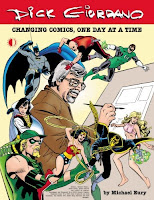 In the early 80's, Giordano became the Executive Editorial Director at DC, overseeing not just Crisis on Infinite Earths but also such groundbreaking titles as Watchmen (which originally was slated to use his old Charlton characters) and The Dark Knight Returns among others. Though his tenure at DC wasn't without some controversy -- in particular his stance against creator rights on behalf of DC rubbed many in the industry the wrong way -- his influence on DC and comics as a whole cannot be denied, either as an executive or as an inker.
In the early 80's, Giordano became the Executive Editorial Director at DC, overseeing not just Crisis on Infinite Earths but also such groundbreaking titles as Watchmen (which originally was slated to use his old Charlton characters) and The Dark Knight Returns among others. Though his tenure at DC wasn't without some controversy -- in particular his stance against creator rights on behalf of DC rubbed many in the industry the wrong way -- his influence on DC and comics as a whole cannot be denied, either as an executive or as an inker. 
